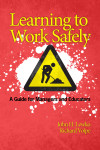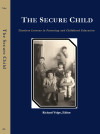2013 Casebook of Exemplary Evidence-Informed Programs that Foster Community Participation After Acquired Brain Injury

Edited by Richard Volpe. In Press, Information Age Publishing, Inc.
Today’s medical techniques are improving the survival rate for people of all ages diagnosed with ABI (Acquired brain injury) and current trends in rehabilitation are supporting these individuals returning to live, attend school, and work in their communities. Yet strategies on the best way of fostering community participation vary among rehabilitation experts. Because many of these individuals do not and will not return to the status quo of their former lives, it is important to examine what constitutes exemplary and promising practices in this area.
This casebook is the world’s first compilation of evidence-informed programs that foster community participation in people of all ages with brain injury. The service settings that were sought, investigated, and cased involved comprehensive programs rather than individual practices that were essentially community based or focused. Further, these programs needed to consider the individual from a holistic perspective by taking into account psychological and social components that affect the health of the individual, such as quality of life and sense of well-being, along with the physical and cognitive components. The overarching goal of the fourteen case compilation is to help others learn about exemplary programs by making information about them accessible to service providers, policy makers, and researchers for possible replication and/or adaptation. The search was worldwide and involved a systematic process to select programs that are evidence-informed and exemplary in fostering community participation using pre-identified criteria.
2010 The Secure Child : Timeless Lessons in Parenting and Childhood Education
Edited by Richard Volpe. Published by Information Age Publishing, Inc.
The Secure Child: Timeless Lessons in Parenting and Childhood Education was designed to contribute meaning to the adage “what was old is new again.” Jut as ideas in child psychology shifted in the 1960s from a focus on behaviour to cognitive stages, we are currently seeing a shift away from stages of development toward an emphasis on the interplay between children and the world around them. Specifically, the book offers practical insights into how children can be helped to cope with their changing worlds. These insights emerged in the 1930s, a time of social and economic upheaval much like today. This collection of original papers by former students and colleagues of William E. Blatz, the renowned psychologist and pediatrician known as the “Dr. Spock of Canada,” makes a vital contribution by bringing forward and examining his work in the context of contemporary ideas about human development, parenting, and education. The collection forms a prologue to an included guide written by Blatz and colleagues, The Expanded World of the Child. This previously unpublished work articulates a comprehensive functional approach to parenting and childhood education. The unique format of this book will make it useful for courses in parenting, childhood education, as well as scholarship in child psychology, personality theory, and socialization.
2009 Learning to Work Safely : A Guide for Managers and Educators
John H. Lewko and Richard Volpe. Published by Information Age Publishing, Inc.
 Working for pay is a common experience throughout North America for youth, who typically enter the labour market with summer and part-time employment, changing jobs frequently through to their early 20s. These adolescents and youth are exposed to a variety of workplace risks and hazards that include operating dangerous tools, machinery, and vehicles; handling cash in situations prone to robbery; and working with supervisors and co-workers whose own “safe work practices” are suspect. In some cases, proper orientation and training is minimal, with supervision limited and of questionable quality.
Working for pay is a common experience throughout North America for youth, who typically enter the labour market with summer and part-time employment, changing jobs frequently through to their early 20s. These adolescents and youth are exposed to a variety of workplace risks and hazards that include operating dangerous tools, machinery, and vehicles; handling cash in situations prone to robbery; and working with supervisors and co-workers whose own “safe work practices” are suspect. In some cases, proper orientation and training is minimal, with supervision limited and of questionable quality.
In this two-part book, we provide the reader with an overview of what we know about young workers and some of the factors that may influence their ability to stay safe at work. Information was gathered through the Young Workers, Young Supervisors Project (YWYS), in which youth participated in an interview process and case studies of their experiences were documented. The literature in Part I draws attention to areas ranging from The Nature of the Workplace, to Risk Perception, and finally to Management and System Support. We give readers an idea of what young workers find themselves facing when they enter the world of work—from characteristics of the workplace, to unique conditions and relationships of young workers. Part II presents a series of vignettes that were drawn from real-life situations observed through YWYS project. These brief, evocative descriptions, accounts, and episodes reveal the types of experiences common to young workers. Each vignette is followed by a scenario depicting open-ended problems and a series of questions to encourage further discussion.
